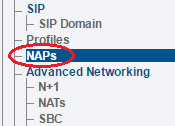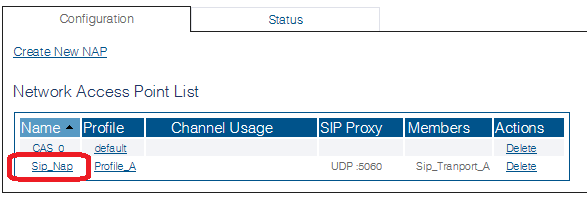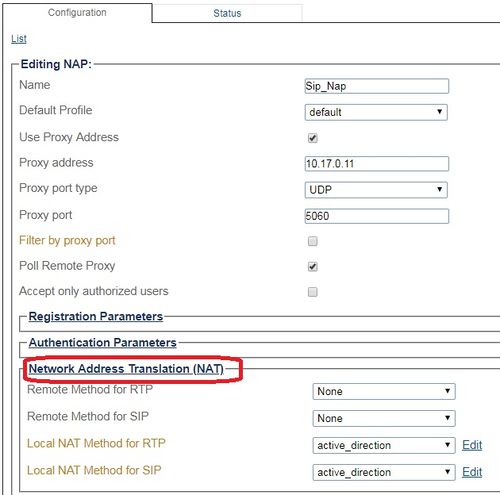SIP Configuration for Remote Symmetric NAT Traversal
From TBwiki
| This article applies to: | Product | Version |
| Tmedia | 3.0, 3.2 | |
| SBC | 3.0, 3.1 |
It is assumed that a SIP NAP or a SIP Open NAP has been created and allocated.
To configure a Remote Symmetric NAT Traversal
1. Select NAPs in the Navigation Panel:

2. Select an existing SIP NAP in the list:

3. Click Network Address Translation (NAT):

4. SBC/Tmedia can be configured for RTP messages traversing a remote NAT as follows:
- None: Remote device is not behind a NAT or remote NAT device is SIP/RTP aware.
- Force Passive Mode: Uses IP address and port from first received RTP packet to start sending RTP packets.
- Parse Direction Attribute: Uses "Passive Mode" only when "a=direction:active" is received in the SDP.
Select the appropriate method for RTP NAT Traversal.
5. SBC/Tmedia can be configured for SIP messages traversing a remote NAT as follows:
- None: Remote device is not behind a NAT, or reports SIP headers (contact, via) that are directly reachable.
- Automatic NAT Traversal: Automatically detects if the device is behind a NAT. This method parses the Contact IP address of the packet and check if it corresponds to a private/reserved IP range. In that case, SIP messages will be sent to the IP/Port seen in the IP header rather than the SIP headers.
- Force Use of Public IP and Port: Uses the IP and port from the IP header of the last received SIP packet.
Select the appropriate method for SIP NAT traversal.
6. Click Save.

